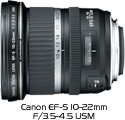Final Flight : November 29, 2008

Image Data
File Name: 20D_69841
Model: Canon EOS 20D
Lens: Canon EF-S 10-22mm F/3.5-4.5 USM
Date: 11.28.08 5:26pm
Focal Length: 11mm (18mm)
Shutter: 10 s
F-Stop: F8
ISO: 400
Program: Aperture priority
Metering Mode: Evaluative
Flash: Off
Focus Mode: Manual focus
File Name: 20D_69841
Model: Canon EOS 20D
Lens: Canon EF-S 10-22mm F/3.5-4.5 USM
Date: 11.28.08 5:26pm
Focal Length: 11mm (18mm)
Shutter: 10 s
F-Stop: F8
ISO: 400
Program: Aperture priority
Metering Mode: Evaluative
Flash: Off
Focus Mode: Manual focus
Yes, (wild) turkeys can fly...
The furcula ("little fork" in Latin) is a forked bone found in birds and theropod dinosaurs, formed by the fusion of the two clavicles. In birds, its function is the strengthening of the thoracic skeleton to withstand the rigors of flight. Also known as a fourchette, the "wishbone" is a shared, derived characteristic of birds and many dinosaurs.
The furcula is commonly referred to as a wishbone because of the tradition that when two people hold the two sides of the bone and pull it apart, the one who gets the larger part will have a wish granted.
The furcula ("little fork" in Latin) is a forked bone found in birds and theropod dinosaurs, formed by the fusion of the two clavicles. In birds, its function is the strengthening of the thoracic skeleton to withstand the rigors of flight. Also known as a fourchette, the "wishbone" is a shared, derived characteristic of birds and many dinosaurs.
The furcula is commonly referred to as a wishbone because of the tradition that when two people hold the two sides of the bone and pull it apart, the one who gets the larger part will have a wish granted.















 Subscribe
Subscribe


